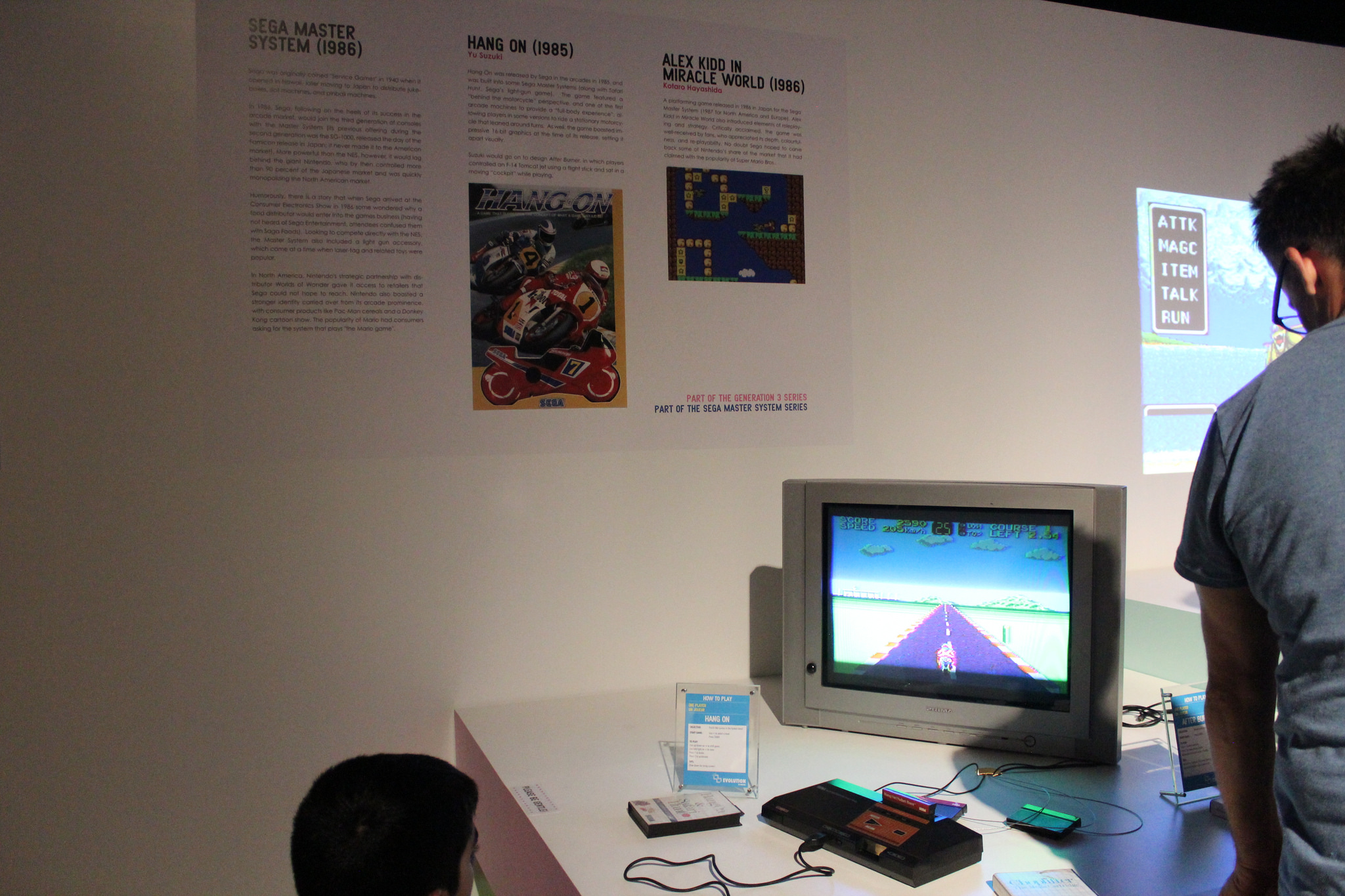 Boy, what a long way we’ve come in video gaming. Perhaps we take for granted what we have now, but it wasn’t that long ago that we as kids, and our parents (and maybe even grandparents?) were playing fairly linear, bare-bones gaming. It’s hard for most gamers nowadays spending hours flicking a joystick doing nothing but guiding a frog across traffic, or playing a simple game of Combat, but many of us grew up on these simple games.
Boy, what a long way we’ve come in video gaming. Perhaps we take for granted what we have now, but it wasn’t that long ago that we as kids, and our parents (and maybe even grandparents?) were playing fairly linear, bare-bones gaming. It’s hard for most gamers nowadays spending hours flicking a joystick doing nothing but guiding a frog across traffic, or playing a simple game of Combat, but many of us grew up on these simple games.
Shop a full range of today’s (and throwbacks to yesterday’s) video games online at BestBuy.ca
My first personal experience was with the Colecovision my mom purchased my dad before I was born. When I was 3, my dad introduced me to Donkey Kong, Venture and Mouse Trap, and a couple years later, my grandparents bought me a Sega Master System, which was my own first console. I still have both of them, and both were featured in a recent “Evolution of Gaming” exhibit at the Centre for Digital Arts in Vancouver.
The exhibit was a hands-on glance of gaming from its infancy to its infamy, covering the early days of Computer Space well into the crash of 1983 and into the rise of 8-bit consoles, where that Master System, the Nintendo Entertainment System and Famicom (mostly the latter two) dominated our home gaming in the mid to late 80s. The exhibit also covered pivotal moments in the history of gaming as well, such as nods to early fighting games like Yie-Ar Kung Fu and Karateka and role playing games like Dragon Warrior and King’s Quest. There were even numerous educational pieces to be had. We all played Oregon Trail somewhere and somehow as kids, but did you know the game dates back as far back as 1971? That was news to me.

While walking through the exhibit, and walking past this gaming history, you start to appreciate the simple roots of where things began, and even how little things like controllers evolved. Most older joysticks, for example, were laid out such that you were originally navigating your characters with your right hand, and pressing buttons with your left. There were fairly ambiguous and ambidextrous controllers on some systems (like the Coleco Vision, for example) but that’s how it was for those early few systems. Once you got into the more comprehensive games, like the NES/Master System generation, you started to see controllers shift drastically. Both of those systems featured flatter controllers with the control pad on the left side and the buttons on the right. The Master System featured a removable thumb stick, and kept things simple with two buttons, and a pause function on the system itself. The Nintendo system, however, usually allowed you to pause from the controller itself, which was far more convenient.
You also see the evolution of game saves. Once games were complex enough to require them, they were done through methods like battery backups or passwords. Passwords are a pretty good failsafe since they were being generated specifically for a static purpose. Battery backups are problematic, but not an issue we saw until years later. Evidently, batteries die, and a lot of the 8-bit era gamers are now seeing that their game saves are disappearing because the battery no longer works. These evolved to what we saw happen later in the 90s, as we shifted toward memory units/cards and eventually hard drive saves which you’ve become familiar with the last couple generations.

Then, of course, are the obvious – Graphics and soundtracks. I used to remember how crazy we went as kids when we saw digitized pictures in the WWF games for Super Nintendo, and then eventually the poorly received Full Motion Video games on systems like Sega CD and 3DO. Eventually developers came to their senses and found a happy medium in which games and videos lived in perfect harmony. Games could be games, and videos could be cutscenes.
Even then, as graphical advancements happened in video games, the need for full motion video cutscenes slowly disappeared, replaced by rendered scenes instead, giving games better fluidity and more of a complete experience. Of course, it meant we left behind breathless experiences like NHL 99’s Intro video, but such is life.
Shop a full range of today’s (and throwbacks to yesterday’s) video games online at BestBuy.ca
We quickly stepped up from digitized voice snippets and re-imagining of music tracks (Rock n’ Roll Racing for Super Nintendo comes to mind as one of the leaders of that pack) to the real thing as games moved over to CD. Nowadays, you’ve got fully elaborate movie script sizes voice recordings by all sorts of movie and voiceover allstars, and hours upon hours of licensed music.

Then there’s the evolution of the controllers too. Wired 2 button controllers have made way to wireless functionality, rumble functionality, multiple thumbsticks, and 10+ buttons. Our consoles are also no longer just our gaming systems. In this generation of consoles, we can stream movies, watch TV, communicate with our friends and relatives and access live sports. We can even shut our consoles down and pick up where we left off. What a stark contrast from 20 years ago when I had to blow into the cartridge and hope it worked.
That’s why exhibits like the Evolution of Gaming are so powerful, and worth soaking in. It’s almost like looking at a family tree and tracing lineage back, only in this case, your family members are replaced by bright, ugly landscapes, stick figures, and stiff joysticks and keypads.
What was mesmerizing to me as a retro gaming fanatic was the quality of the display, and the fact that CDM basically found everything old in fabulous shape, and in box. If you were ever wondering what the Magnavox Odyssey or Super Pong’s boxes looked like, both were featured next to their respective systems with fully playable games.
Finally was a quick glance at the future of gaming: Virtual Reality. This was a concept we tried to make work in the 1990s with things like the Virtual Boy, but well, it didn’t quite work. With the advances in technology, we now have things like the Oculus Rift and Sony’s Project Morpheus to help us forget days past. The students of the Centre were showing off a 13 week project they created for the original Oculus Rift entitled “Monster Yune,” a Rampage-inspired motion game where you destroy the city skyline of Vancouver. I had the opportunity to play the project and beat it in the allotted time. Thankfully, this demo didn’t require me to climb anything!

Let’s see where the future takes us from here on-in, but things definitely look bright, and while I have fond memories of the very systems I played as a kid, I’m glad we’ve evolved this much over the last couple decades.
Shop a full range of today’s (and throwbacks to yesterday’s) video games online at BestBuy.ca



